My Mechanical Machinations - A Keeb Story [Part 1]
It was probably the second time I threw a $50 Logitech keyboard at the wall that I wondered if there was a better way. Typing was always a mindless task that I never stopped to improve. I just kept going through keyboards. I stopped at Micro Center one day to pick up another average keyboard, but thought hey, maybe I should pick up one of these mechanical keyboards I keep hearing about.
The beginnings – Store bought first steps
I do not remember which model G.Skill it was, but I do remember that it had Cherry MX Red switches. The linear nature of the switch was strange to me at first, but I got used to it quickly enough. It was a better experience than the previous keyboards, but it did not register as impressive. Fast forward a few months and I wanted a keyboard for the media room. This was when I discovered the lack of Bluetooth/wireless mechanical keyboards on the market. Still far off from the custom world, I perused Amazon a few times until the Drevo Calibur 71 jumped out at me. I ordered it with “MX blue” switches. It was $60, so I was not particular on the origins of the switch.

One sentence. It took just one sentence typed on this keyboard to realize I loved clicky switches. Over the next few weeks, I had come to appreciate the audible feedback clicky switches provide. With the assurance that each keypress was registered, I flew through documents. This flipped my collector switch, and it was off to the races. I replaced my MX Red G.Skill board with the same board in Cherry MX Blue, a Vortex ViBE, and an Azio Retro Classic. They were fine, but I felt I would keep buying fine boards until I stopped myself with something good.



Something more was needed, but what? – The Kira Saga
I sat down and got my priorities in order. I like having the same board at my home office desk as I do at the office. Office needs come first since that pays the bills. I work with numbers most of the day, so I needed a numpad. This was already a significant hit to my options. I convinced myself I did not have time to build a full custom board, so I looked for prebuilt options. It was honestly a blur for a while, then I came across Input Club. The Kira looked like it would be everything I wanted. I was ready… then I saw the price tag for the aluminum case version. I took a deep breath, then continued adding it to cart anyway. I thought the price was steep, but I previously peered into custom builds and knew it was par for the course.
There was something I did not account for when I went to add it to cart. Switches. I knew aftermarket switches existed, but I did not know the vastness of the switch market. Kailh, Gateron, Zeal, Hako True, Hako Clear? It was another language. Ok. Time to take a step back and do some research. At this point, it was clicky-or-die for me, so I didn’t entertain any linear or tactile options. This made some of the keeb experts in my audio Discord servers shake their fists. They insisted that I never tried good switches, only ever having experience with Cherry. I did not listen. I ended up picking Kailh BOX Pale Blue since Jades were out of stock. My excitement for unexplored territory typically gets the better of me, so 2nd day air shipping it was.
The Kira arrived in style. A slick, zippered soft-shell case was all the stood between me and an oncoming addiction. It was beautiful. The quality was apparent the moment I picked the Kira up. The sand-blasted aluminum frame contrasted with matte white keys beautifully. Gray function and modifier keys helped keep the board compact yet maintained visual separation. This made up for the lack of physical separation due to the keyboard’s compact (for a full layout) form factor. Plugging in the Kira, I was greeted with a soft, orange glow. I am not too fussed about RGB, but it was so subtle, that you are paradoxically forced to notice it. The frosted under glow went from being something I did not care about on a spec sheet, to possibly the highlight of the board (from an aesthetic standpoint). It was the first thing anyone commented on when they stepped into my office.

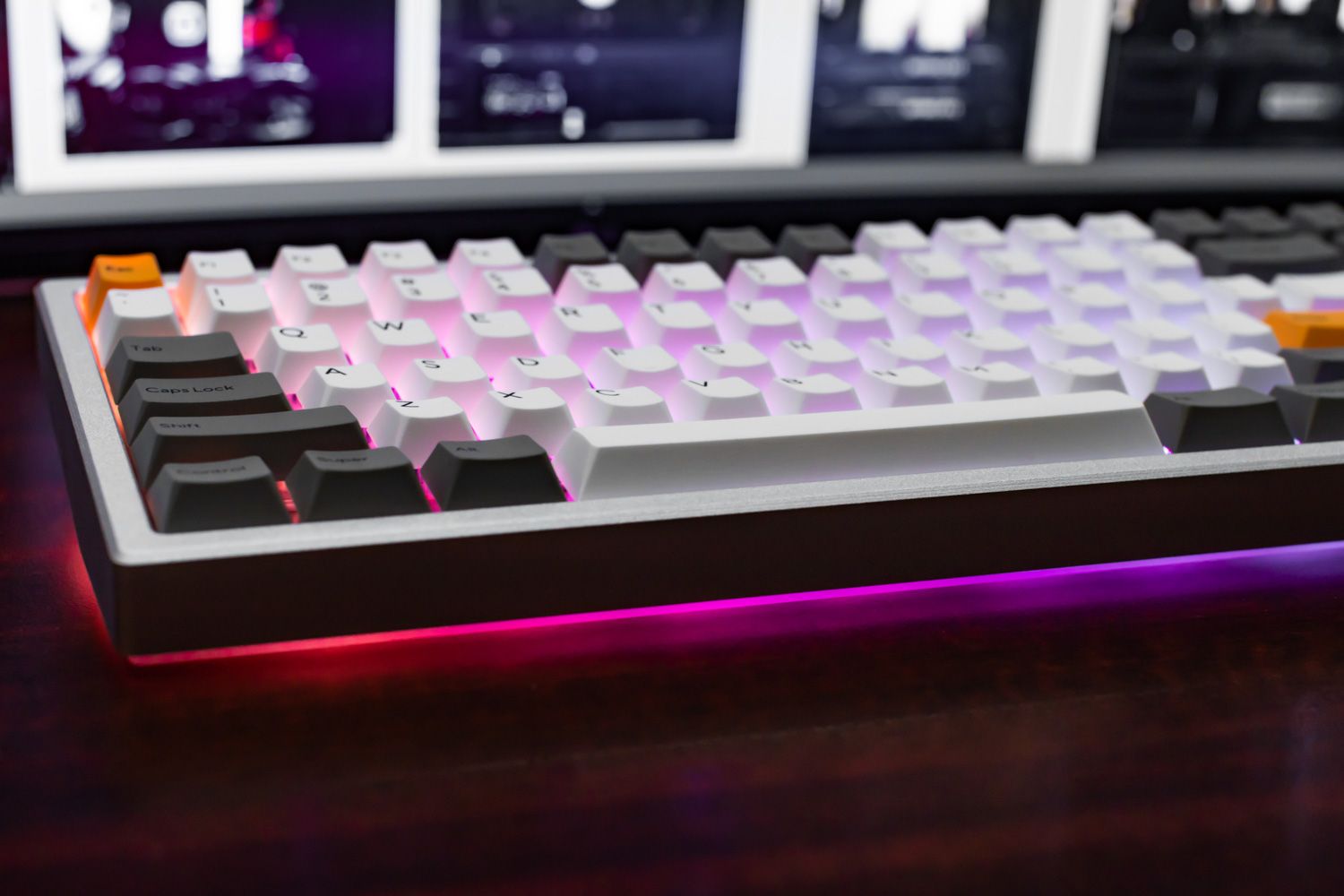

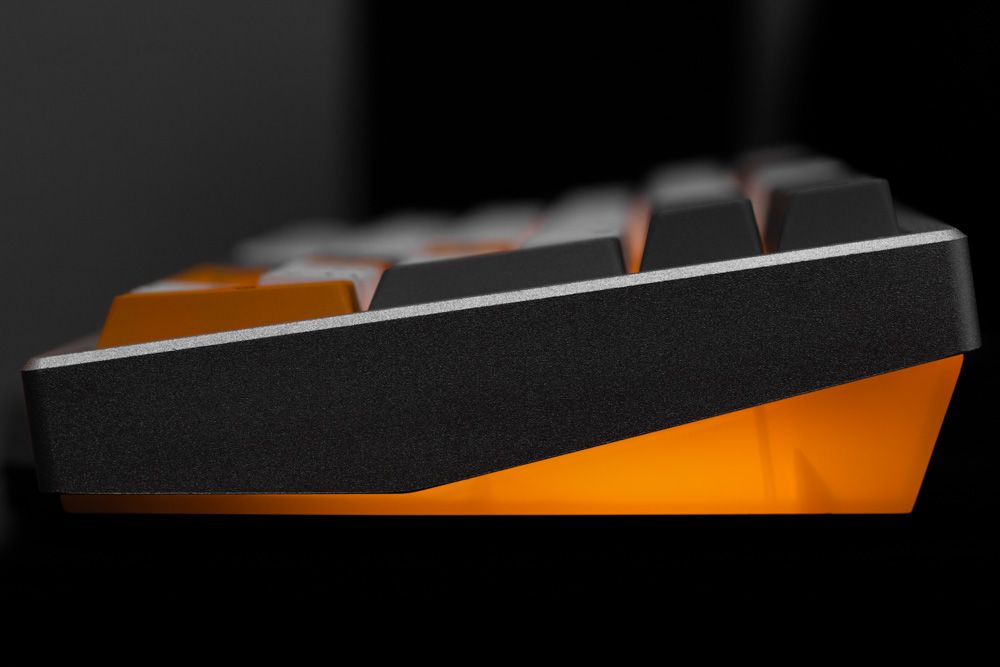

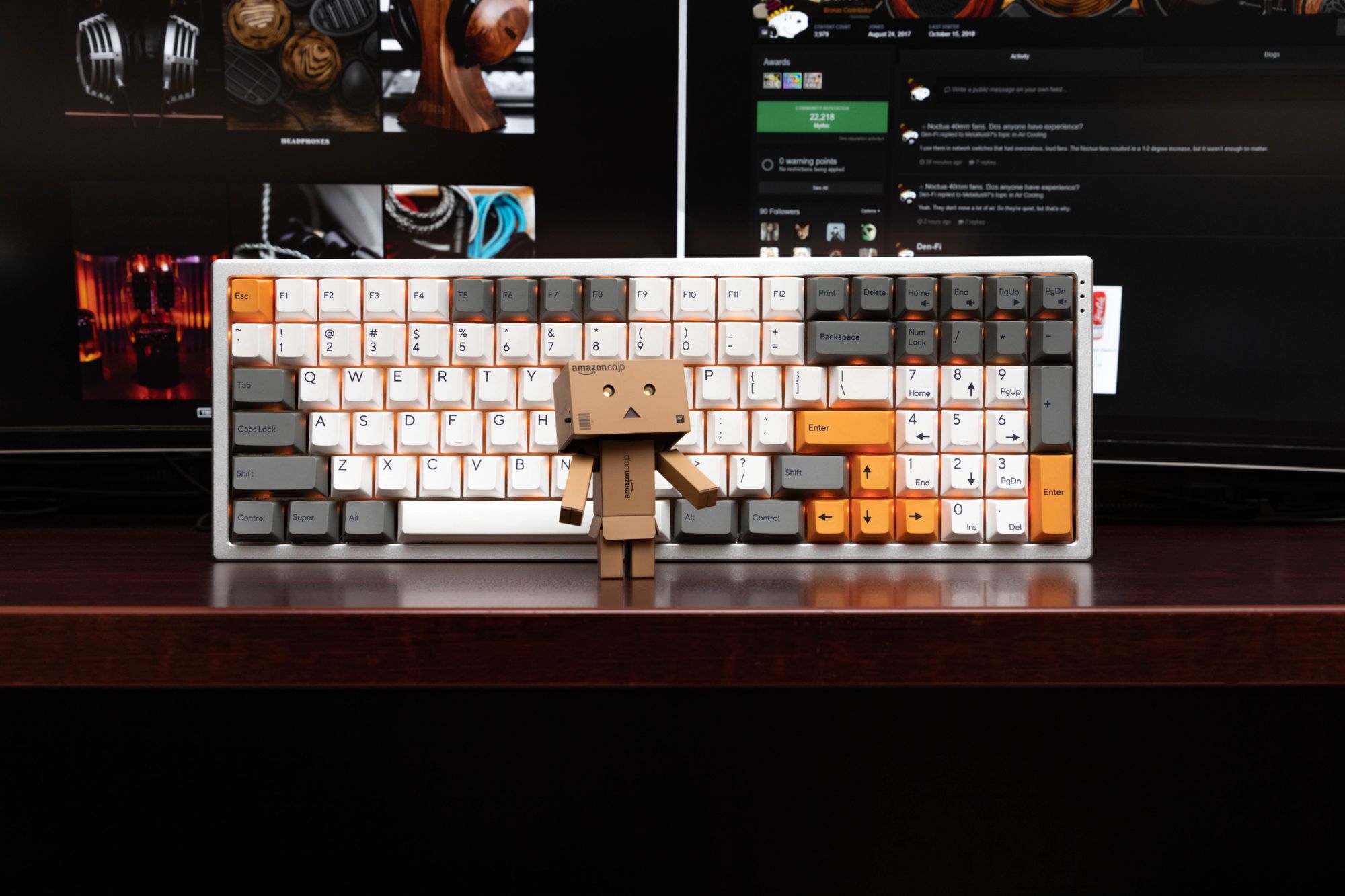
Which switch would switch my switch misconceptions?
One sentence. It took just one sentence typed on this keyboard to realize I had no idea what a good MX style switch was. A light, crisp click—almost like a child tap dancing across a cedar stage—shattered everything I thought mechanical keyboards in general. I never stopped to consider click tone and keystroke consistency. A few days with the Pale Blues and I was able to hear just how inconsistent a sound the Cherry MX blues were. It was something I could never return to. My typing speed and accuracy skyrocketed with the Kira. While Kono Store was out of stock on Jade and Navy switches, KBD Fans had them ready to ship. I ordered a full complement of each and received them a week later.
Having taken such a large step up with the Pale Blues, I did not think there was much further to go when it came to different switches. This turned out to be a flawed way of thinking. As with audio, preference plays a big role. Weight, tactility, sound profile… there is so much customization at play to make it truly yours. Pulling the Pale Blues from the Kira with the provided switch puller was tricky at first. Inexperience was a factor. It seemed like I was going to crush the Jades. Pulling a few more made me quite a bit more comfortable. Installing the Jades was similarly nerve wracking. I was careful to check the position of the pins and push straight down so they would not be bent. Alright. It was time to cross my fingers and head to a key tester website.
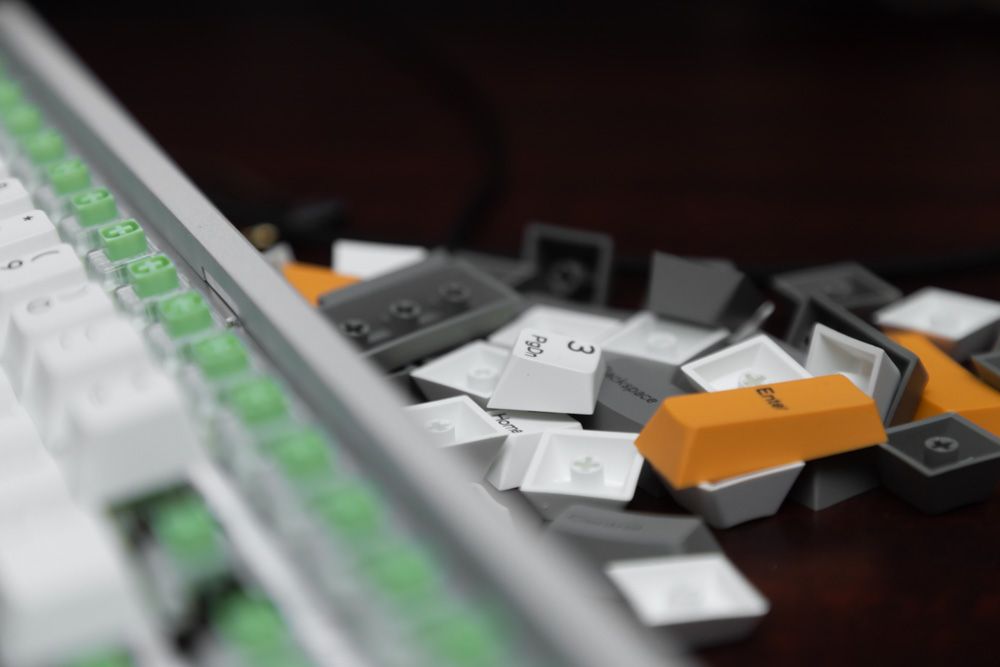
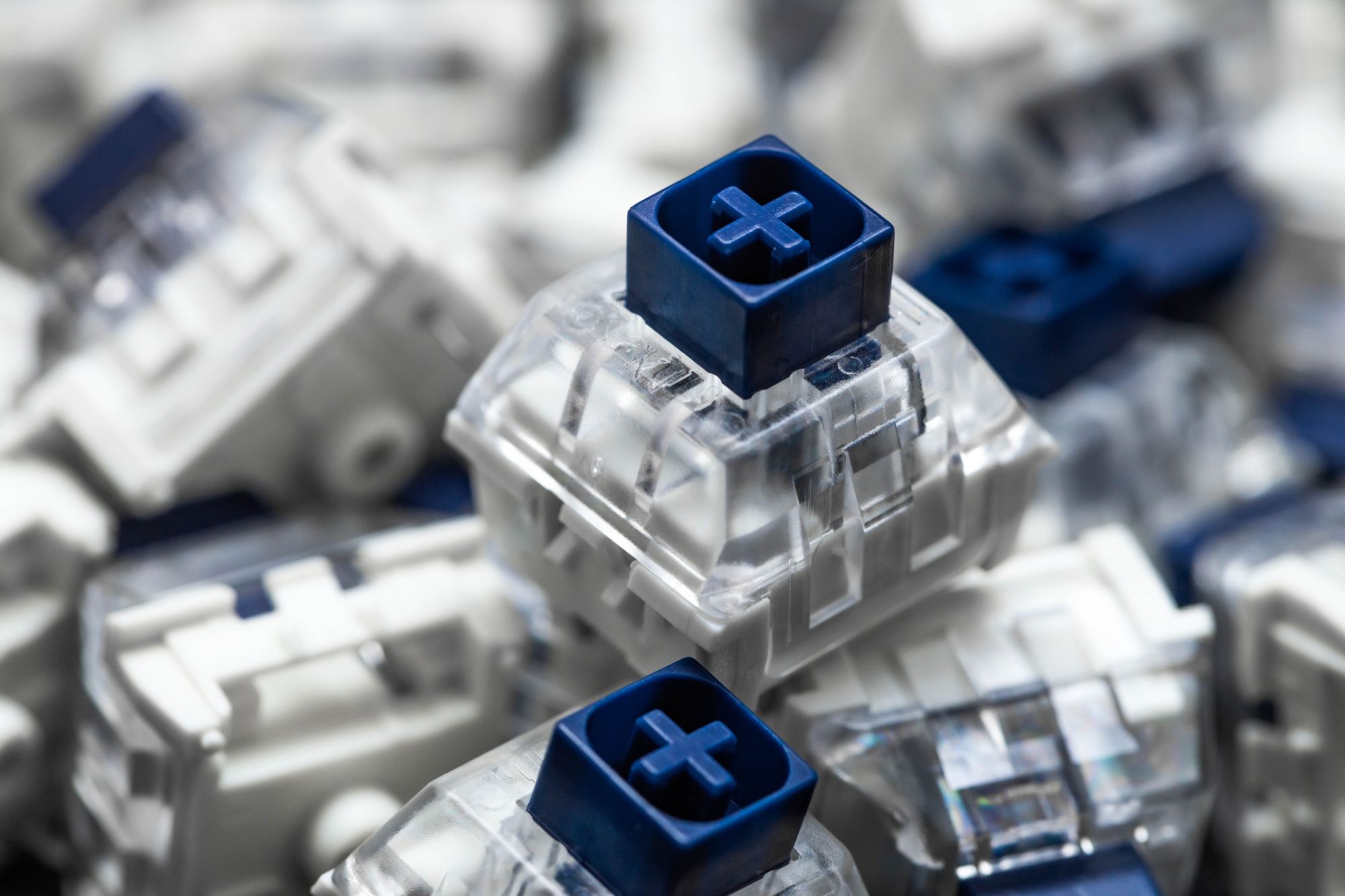


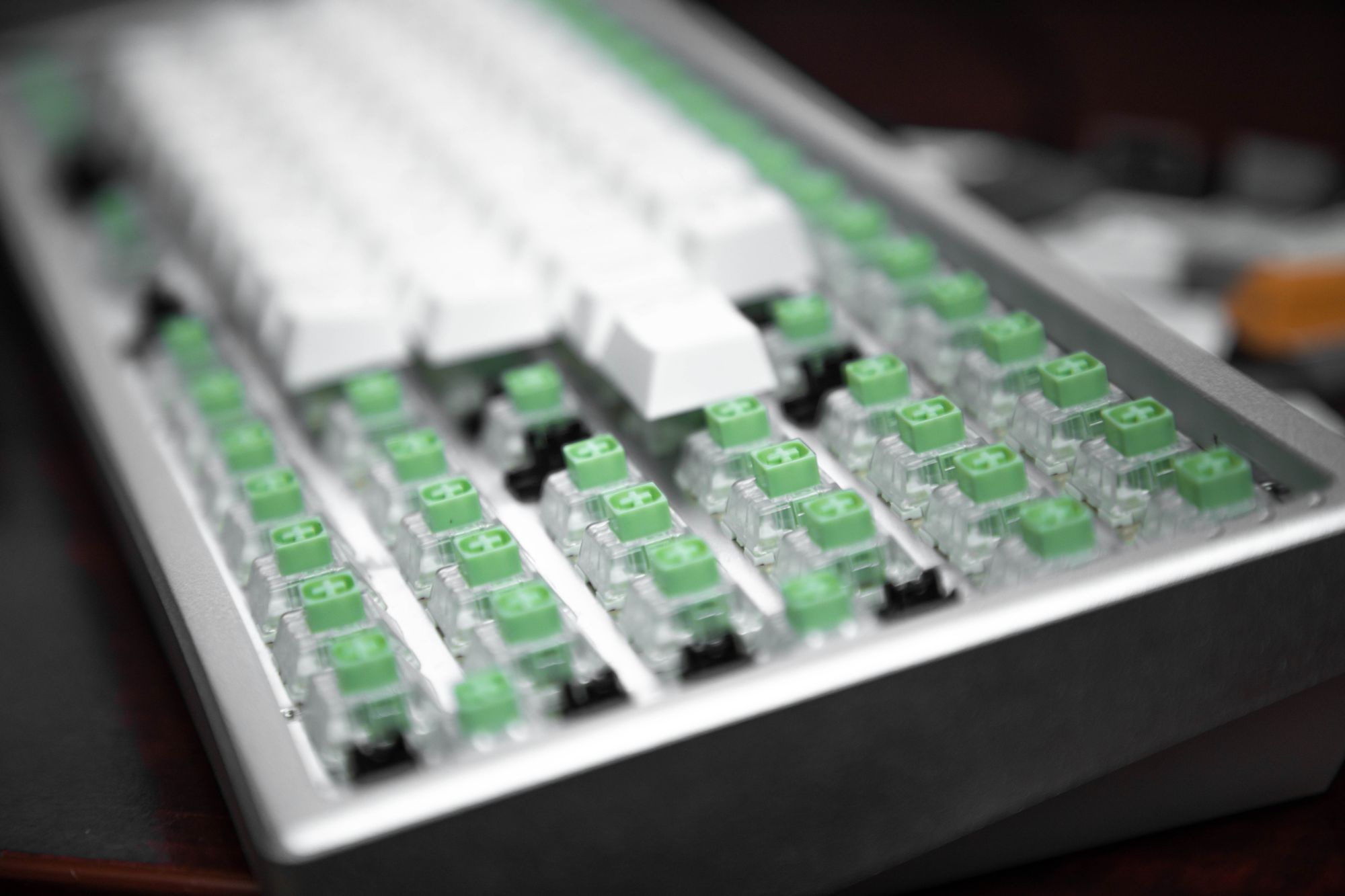
The first press was quite an experience. A thick, rich click—almost like chopping a carrot—echoed and I knew I found the one. After testing, I quickly reinstalled the keycaps and immediately started typing a proposal. You could have told me I was playing a wonderful tune on the piano and I would have believed you. I was having a blast. My thoughts were chasing after fingertips as words flew all over the page. When it came to the numpad, I used the BOX Navies. They were even more satisfying, but I made the call not to do an entire board of them to maintain speed over hours long typing sessions.
I copy/pasted this board for my home office since I like having the same typing experience at both of my main desks. This time the BOX Jades were in stock, so I just ordered it that way. This concludes my keyboard journ–just kidding. I have a compulsion to explore and collect everything I enjoy. So, what would the next step be?
Another step in the custom direction – Switching it up
At this point, I wanted to explore switches a bit more. I learned that hot swap sockets have a finite lifespan, so I wanted a tester board of sorts to experiment with. Perusing KBD Fans, I came across the GK64 kit. A 64 key hot swap board and a wooden case. I also picked up a NIU40 hot swap board kit. I will admit it was no other reason than how interesting it looked. I certainly did not know anything about Ortholinear at the time. I got keycap sets for each from Amazon. A cheap white and gray YMDK set, and a set of blank YDMK XDA profile keycaps in gray, dark gray, and light blue for the Ortho.
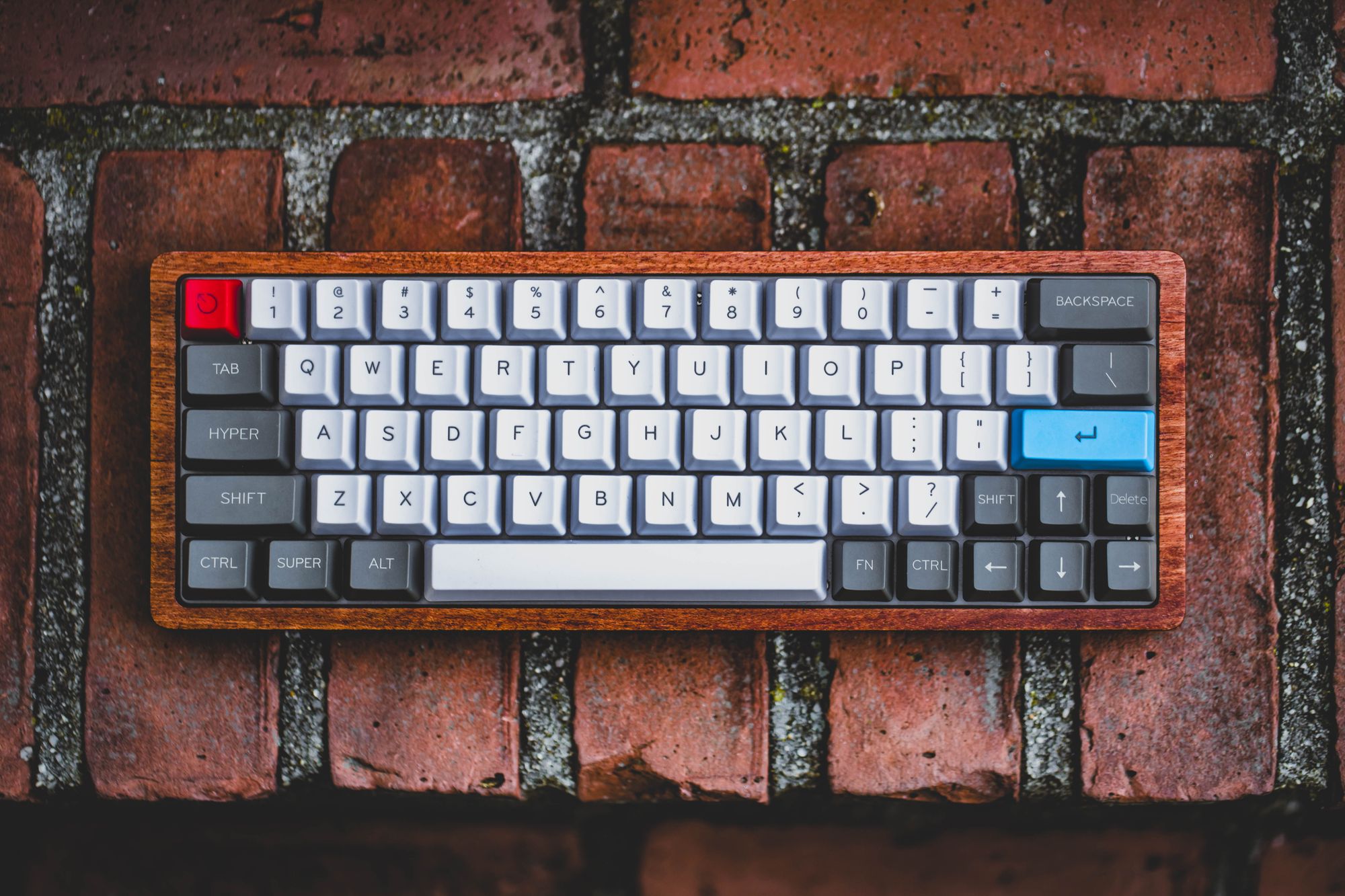
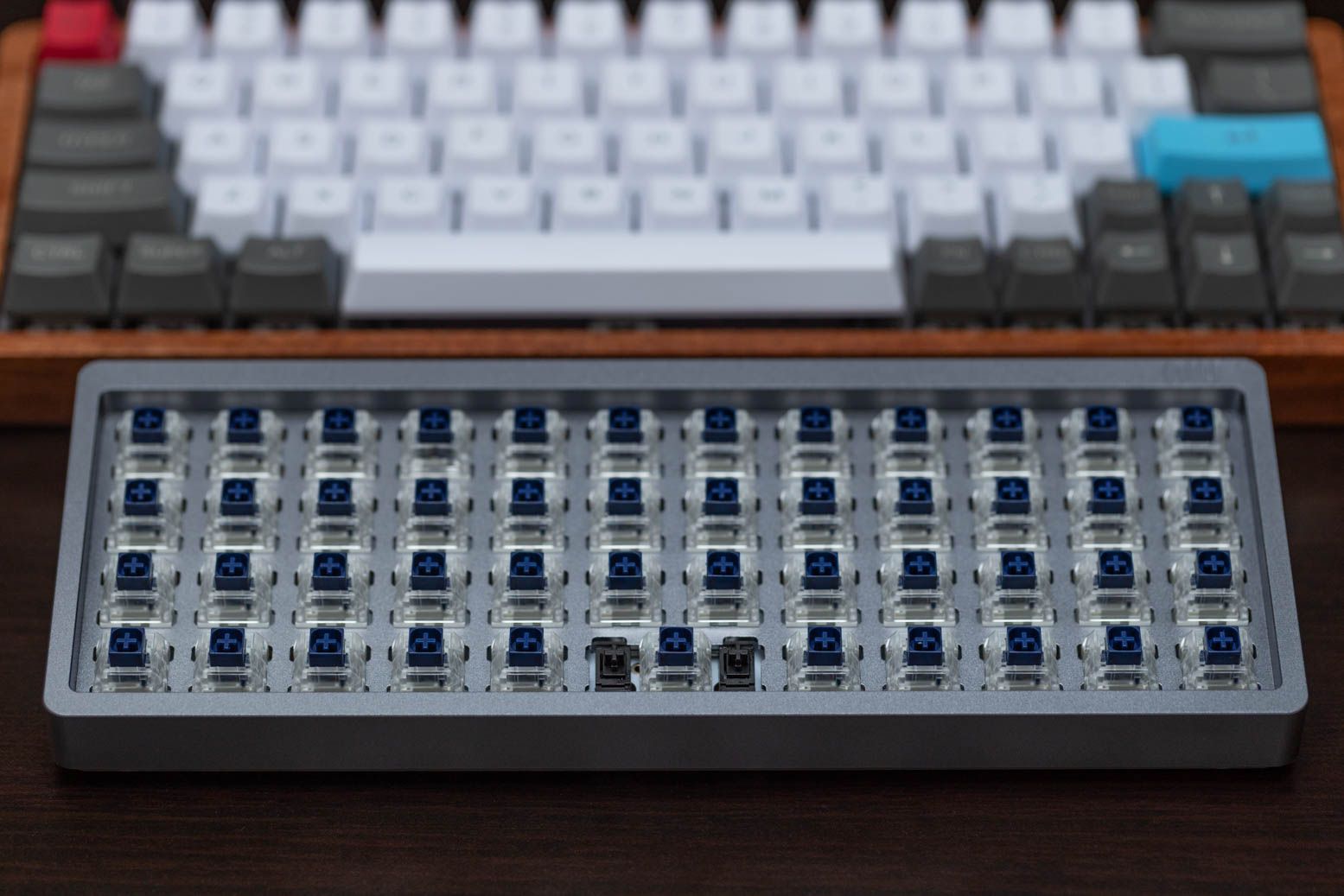

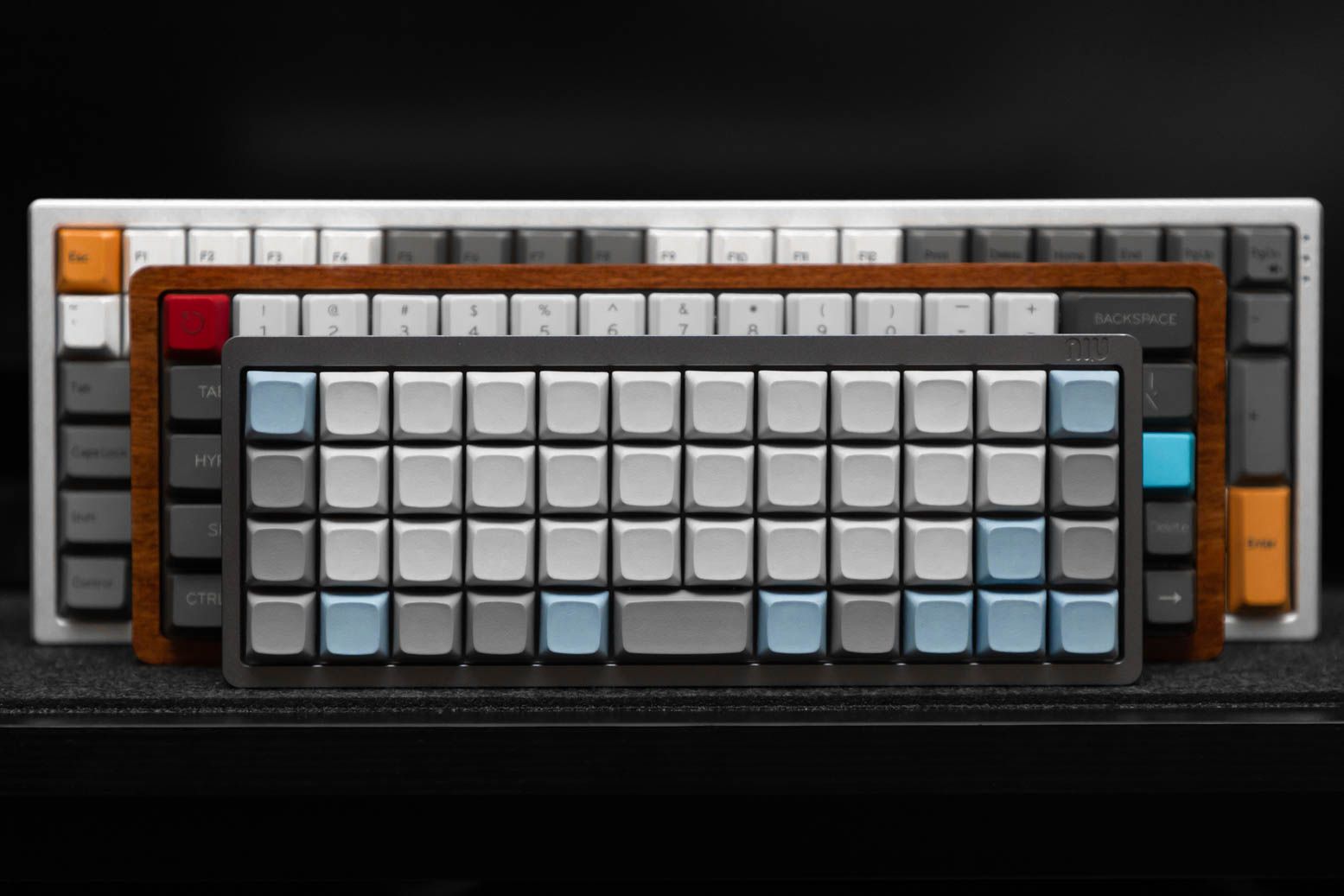
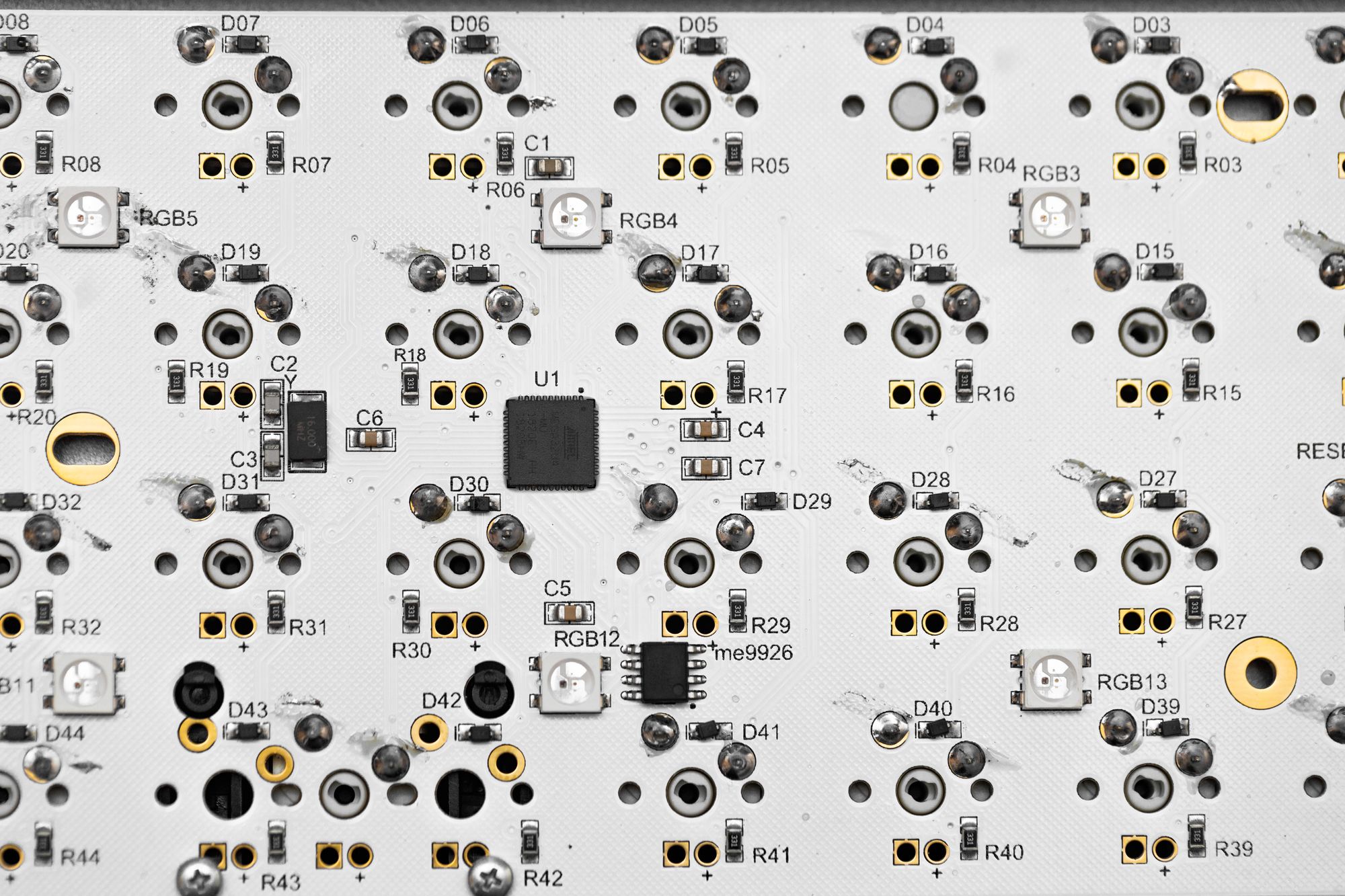

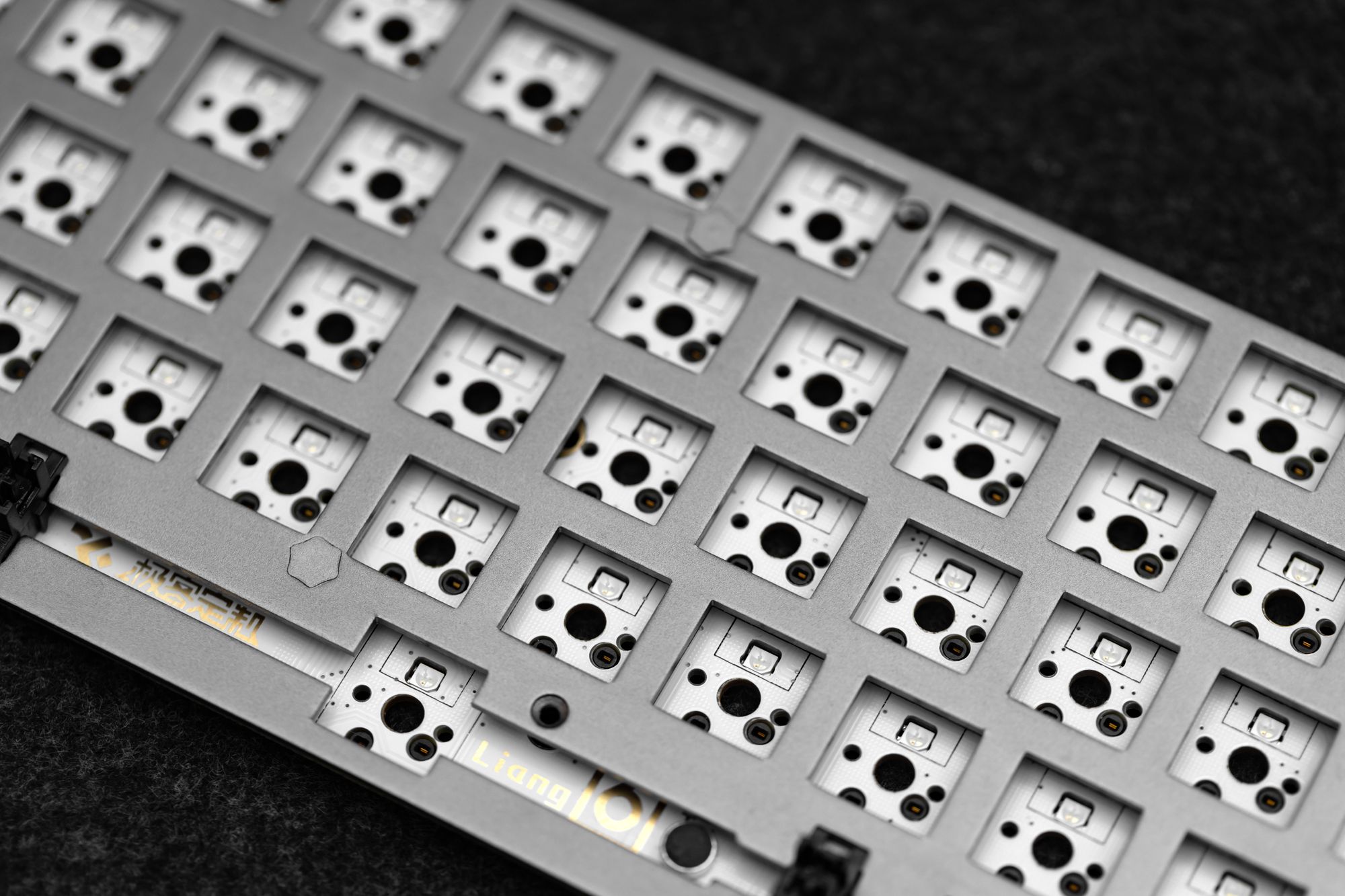
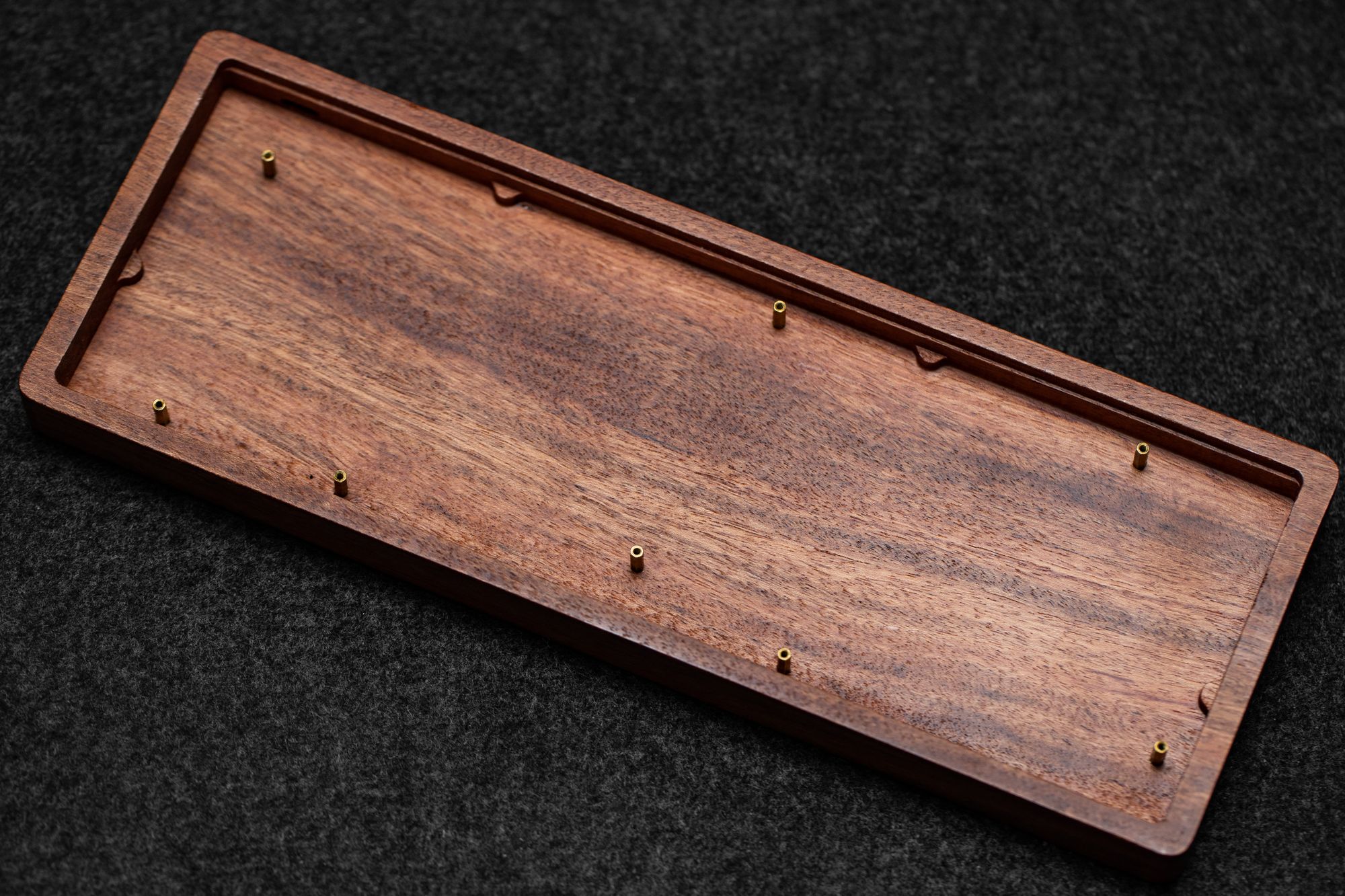

The GK64 kit showed up and took no time at all to assemble. From this point I went through all kinds of switches and a couple of sets of keycaps. Novel Keys Creams, Gateron Ink Blacks, Zealio V2, Tealios V2, Ink Blues, Speed Golds, Glazed Greens, Ancient Grays, and some others I know I am missing. There was this voice the whole time I was experimenting with switches. It belonged to the most vocal person on Discord when it came to picking clickly switches. He said, “You only like clicky switches because you’ve never used a good linear or tactile switch.” I figured he would end up being correct eventually. Of all the switches I tried, I never stopped loving Jades. I still use them in the Kira at my lab desk. My top switches were the Zealio V2 and Tealio V2, with Ink Blacks rounding out the top 3 non-clickies. I am sure there are tons of other switches I would like, but I had to draw the line somewhere.

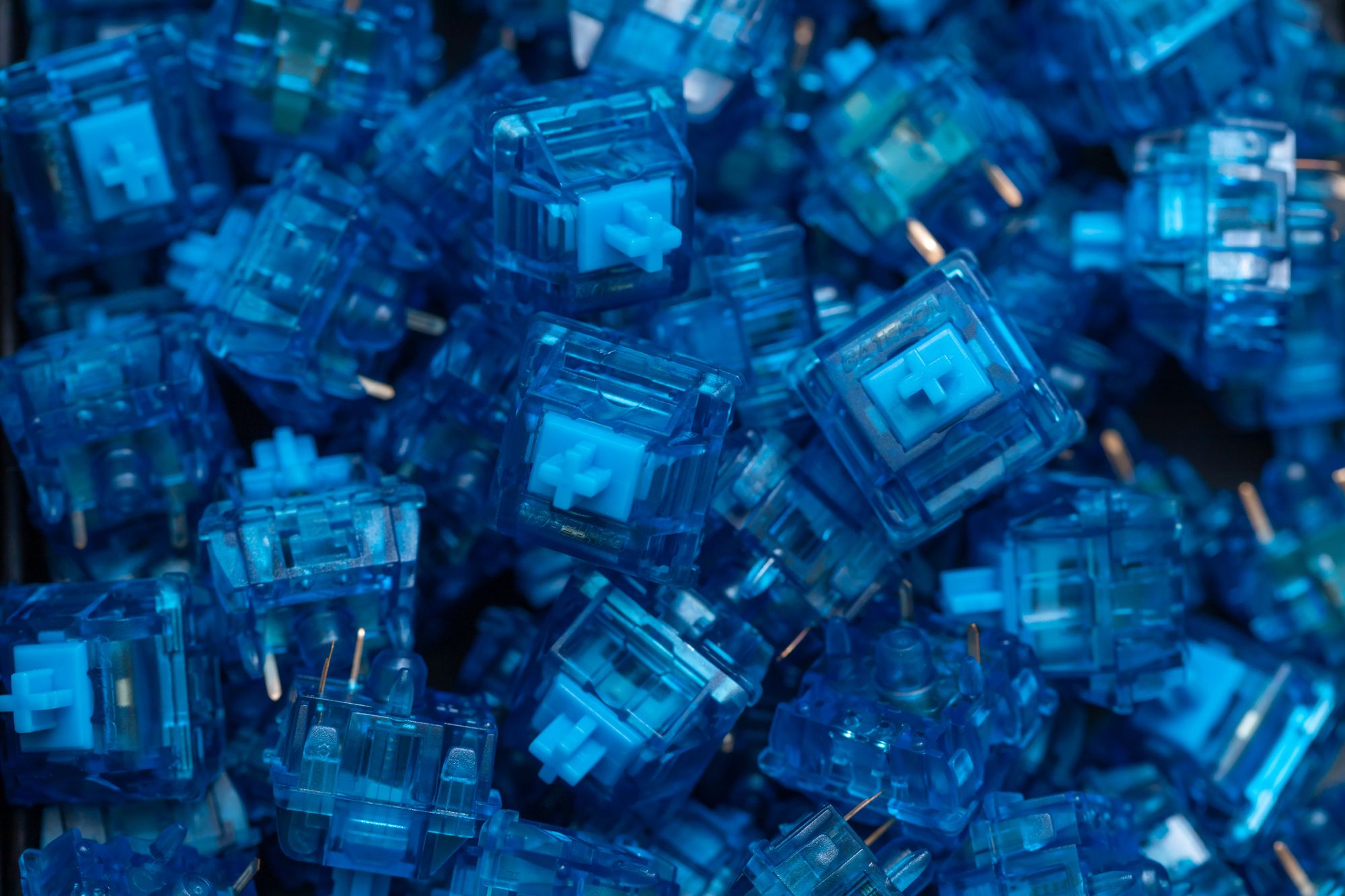
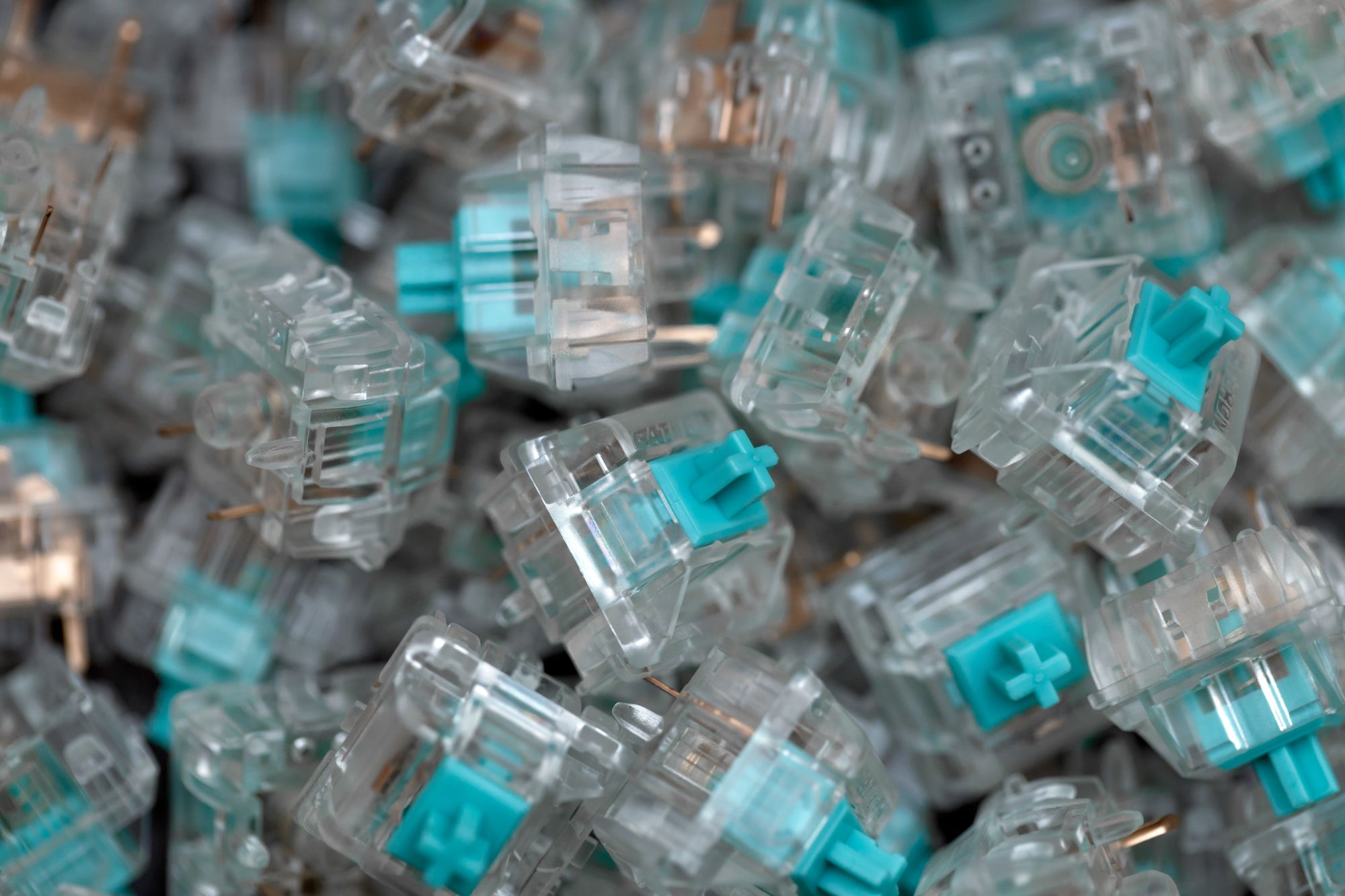


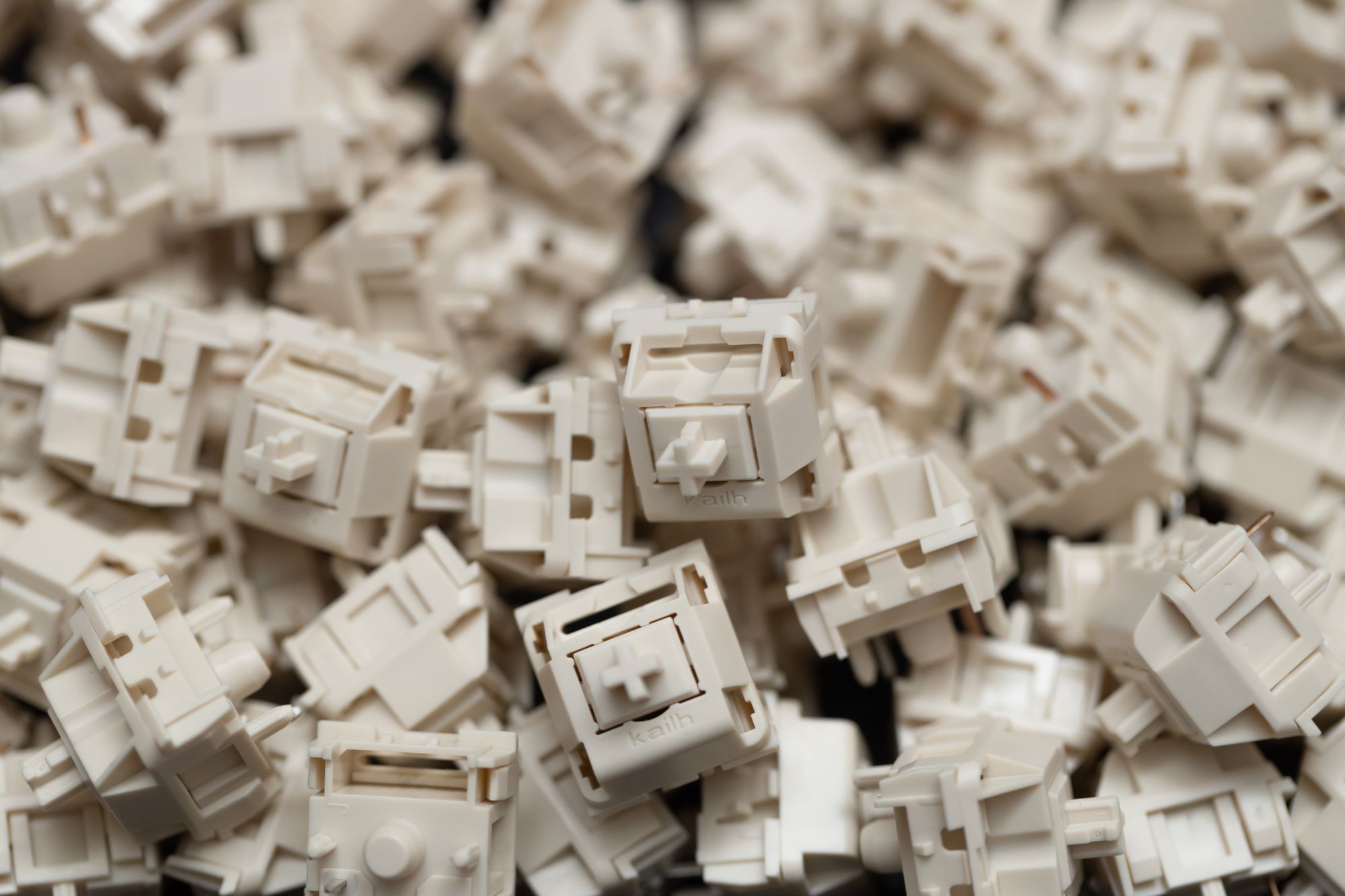



The novice custom build – Enter the DZ60
During my experimentation with the GK64, I kept my eyes open for what I wanted in an “ultimate” beginner custom build. On the switch front, the Zealio V2 and Tealio V2 were fighting for their place in the board. I enjoyed the almost boundless, delicate travel of the Tealios, but the feedback of the Zealios was calling me. Ultimately, they won. For the PCB, I landed on the DZ60. I knew I was not going to find a full-size board, so I went the opposite direction. The DZ60 had several layouts, the most important being one with arrow keys. Some are comfortable using them behind a layer, but I use them too much to add a step between thought and actuation. For keycaps, I took an interest in SA. Something about the profile spoke to me. They are tall, majestic, and overall dressed for the role I wanted them to play in the grand design. I chose the Maxkey Foundation set since it had colored modifier and WASD options. I rarely look at my keycaps, but when I do, I want to like what I see. The separation of the colored modifiers, arrow keys, and WASD keys provided was a call back to the Kira. My first true mech. I was back and forth on the case choice until I came across the stunning red of the KBD 5-degree case. Red is not a color I am typically drawn to, but the angles looked awesome and it was a perfect match for the red optional caps you could get with the Maxkey Foundation set. I chose a brass plate for weight and sound, and GMK screw in stabilizers after getting that recommendation from an experienced friend. The only problem I ran into was a delay on the Maxkey set. It was just my luck that the day I was ready to pull the trigger was the day they went out of stock. I ordered a set of blank caps to hold me over.
Building a dream – Cherry Killer assembleeeeeeeeeeee!
I realized something as all the parts started to arrive. Every bit of a truly custom mechanical keyboard is finished. Things only the builder would see. The brass plate is brushed, the inside of the 5-degree case does not have any ugly machining marks. All these little things you will not see once it is assembled. You see them while you build. Even switches are tiny works of art. It is totally done for you, the person who ceaselessly toiled to piece together a group of parts that will soon work in harmony to do something once thought a mundane task.
The assembly process was extremely familiar to me at this point. I tore down and rebuilt the GK64 so many times, I could do it with my eyes closed. Since my main caps had not arrived, I decided to use the Gateron Ink Blues I ordered out of curiosity after trying the Ink Blacks. I wanted to save the Zealio V2 for the final assembly so that I get the full effect. The KBD Fans 5-degree case is just a solid chunk of aluminum. The weight has to be one of the most satisfying things. It is heavier alone than the fully assembled Kira. The DZ60 PCB is a pretty shade of purple, but I would have preferred the black of the non-hot swap. The brass plate is nicely finished. Again, I just cannot get over the attention to detail only the builder is going to see. The plink from the plate as I installed each switch was satisfying. It sang a little tune that got deeper in tone as the board filled with eager switches. The red case, purple PCB, brass plate, and blue switches came together in an oddly satisfying way. It should not work, but it does. Installing the caps was as mundane as installing keycaps can be, but it’s a part of the process, nonetheless. I decided to use the red arrow keys as WASD keys instead, to make sure I wanted them in SA when the final set arrived. It looked interesting. Interesting enough to keep as part of the plan.
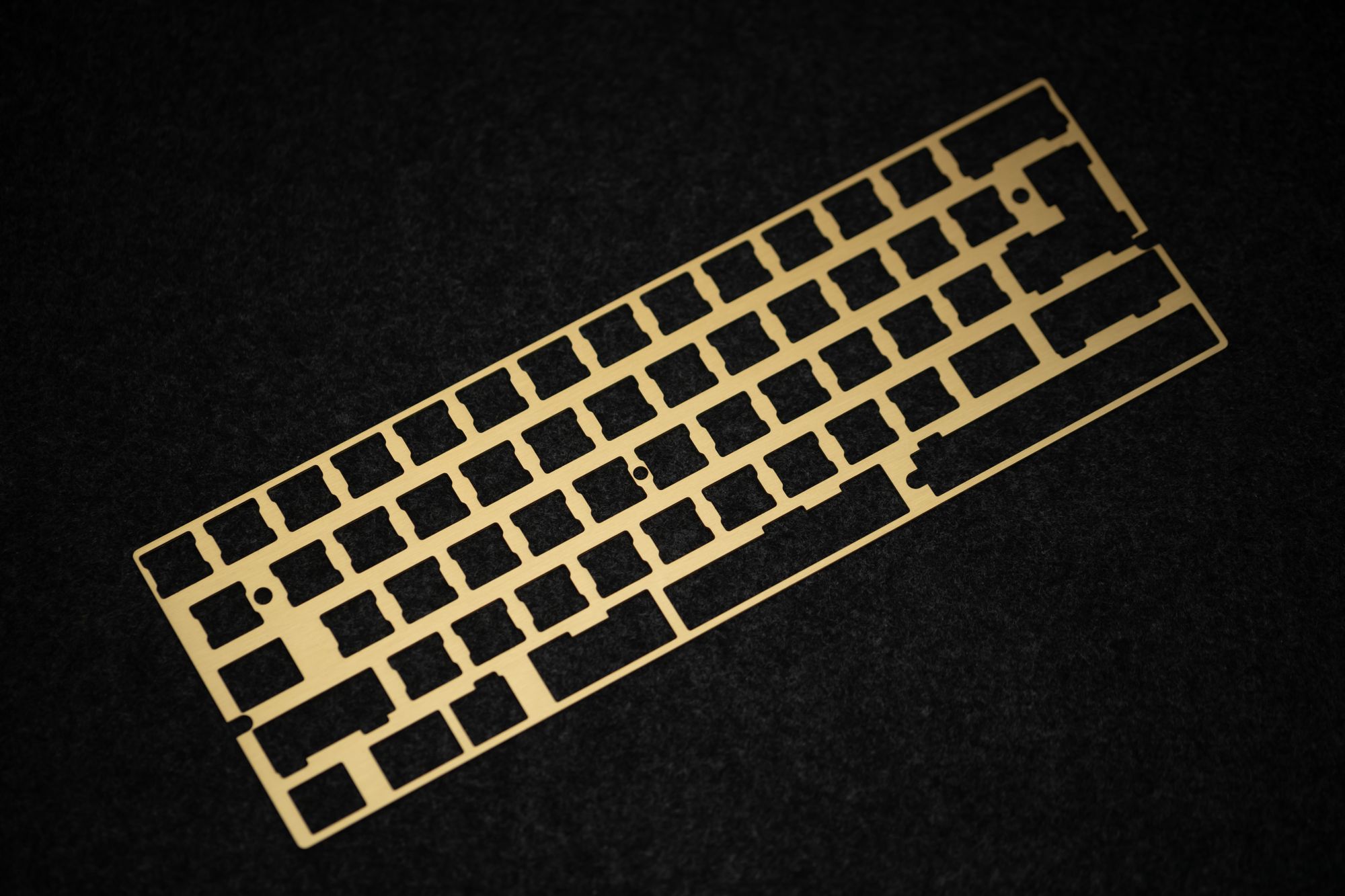






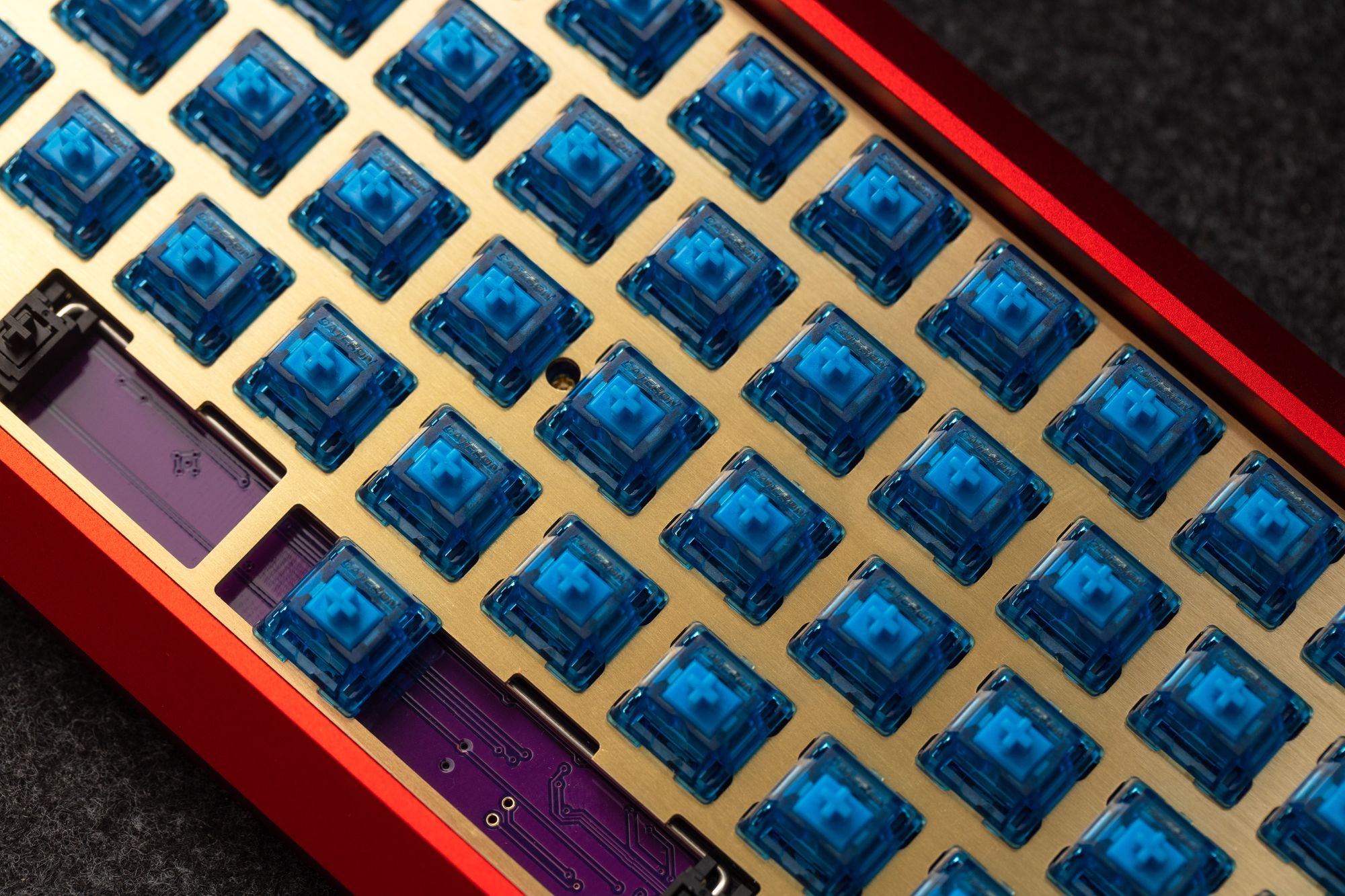
I fired up a switch tester. This time I was confident enough to do it after the keycap install. Everything worked! I was met swiftly by the law of diminishing returns, however. I did not feel much excitement from the Gateron Ink Blues. Perhaps it was because I knew going in that they were just okay. They did nothing for me. That was the point though. I wanted to save the best for last and installing these accomplished the task and then some. I was not expecting to like the blank caps as much as I did. This was great because my anxiousness for the new caps subsided greatly, but mildly terrifying because I just spent $100 on keycaps that I am now second guessing. Deep breath. That is for another day. Just enjoy it as it is now. And I did.
This was to be my number two keyboard. I recently built a second workstation for a project that required a lot of attention, so this keyboard was used daily. The time flew by as I was deeply entrenched in work. The keycaps showed up and all my fears about not using them were blown away. They were beautiful. The white was matte, yet pearly and the red was deep and vibrant. I popped the blank caps off quickly and efficiently. The Ink Blues were ousted with a similar fervor. In went the Zealio V2s. It was perfect. Their purple complimented the purple PCB wonderfully. Waiting to install them was a good plan. I patted myself on the back. Fully assembled, I could hardly wait to type something, I skipped the key testing altogether and went straight to replying to an email I knew would require a lengthy response.
If my first go with the Kira was a clicky piano medley, this was the accompanying percussion. Typing was felt, not overtly heard. I feared I would miss the audible feedback of clicky switches, but the physical, reassuring bumps were doing just as well. This was it. This was all I ever needed—Though since this is titled Part 1, you know that is not true.
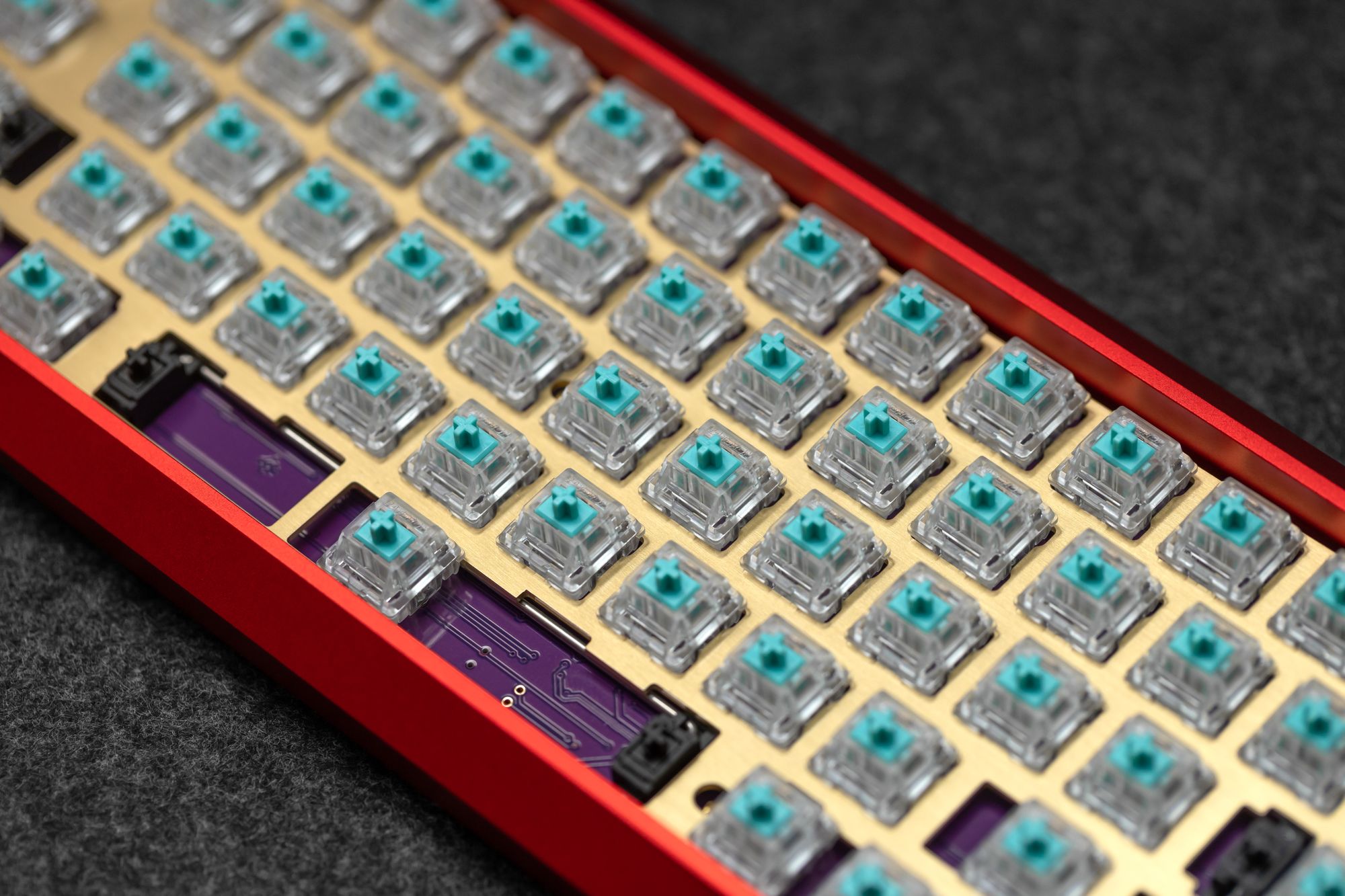


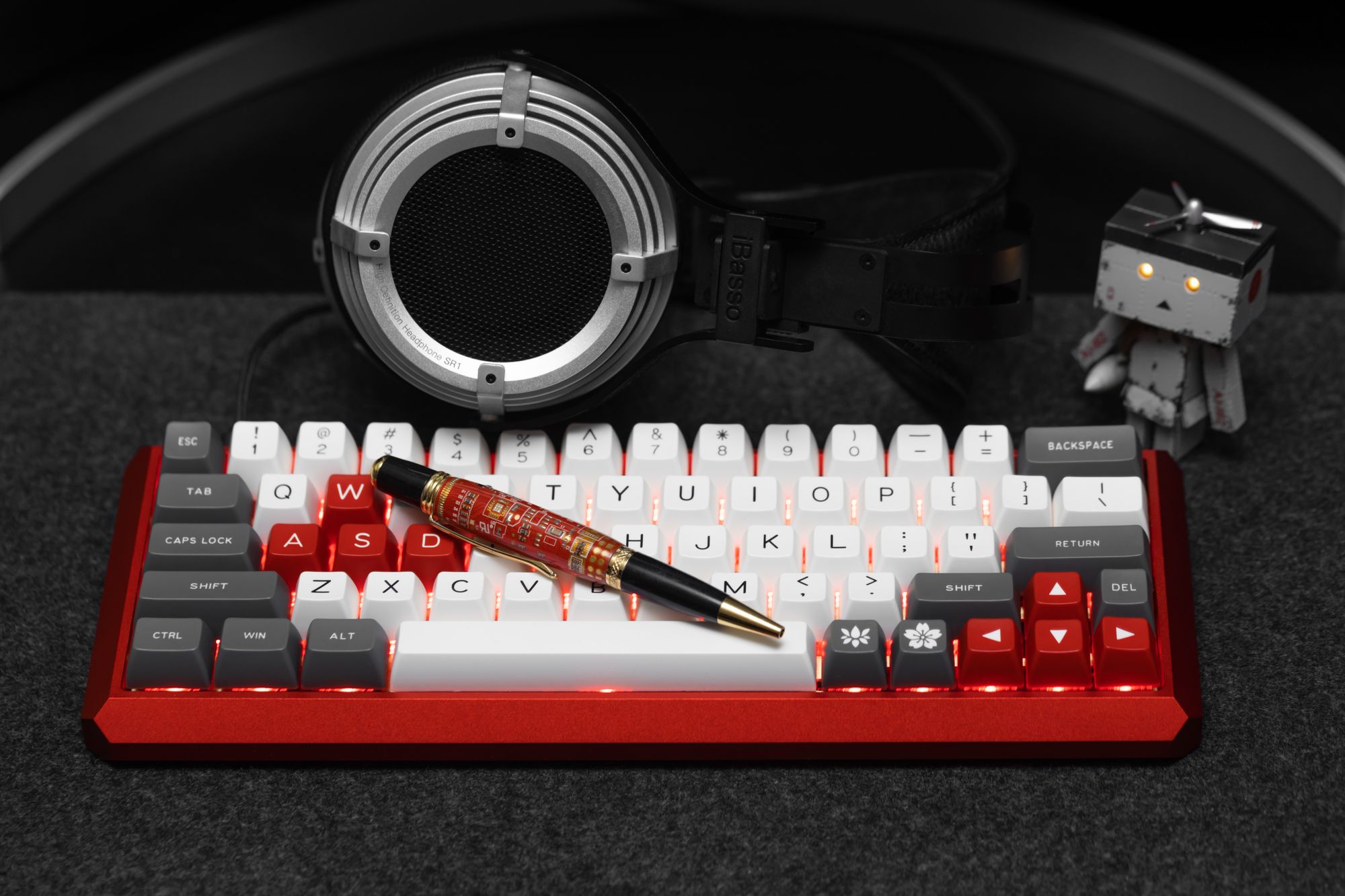


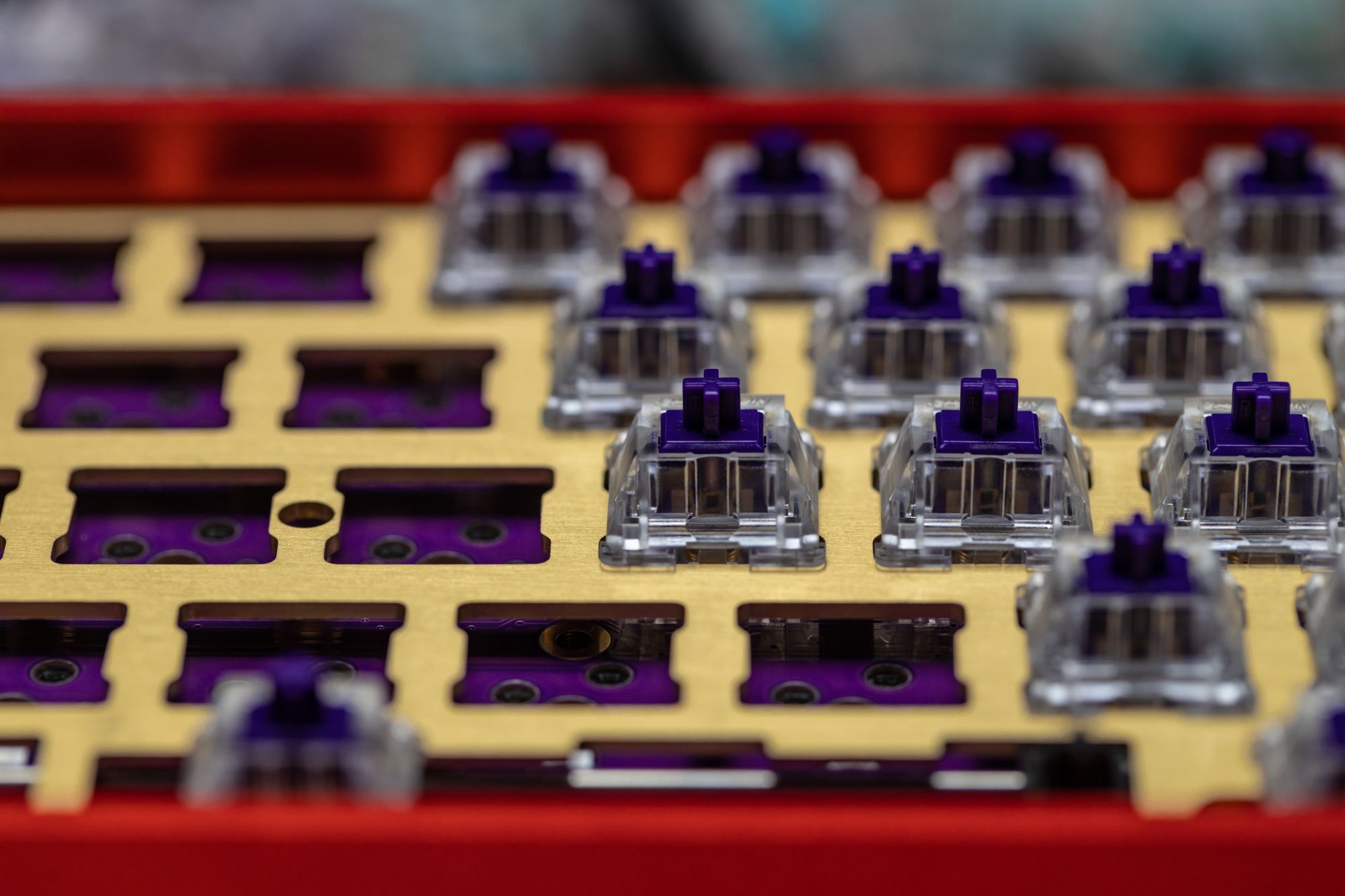
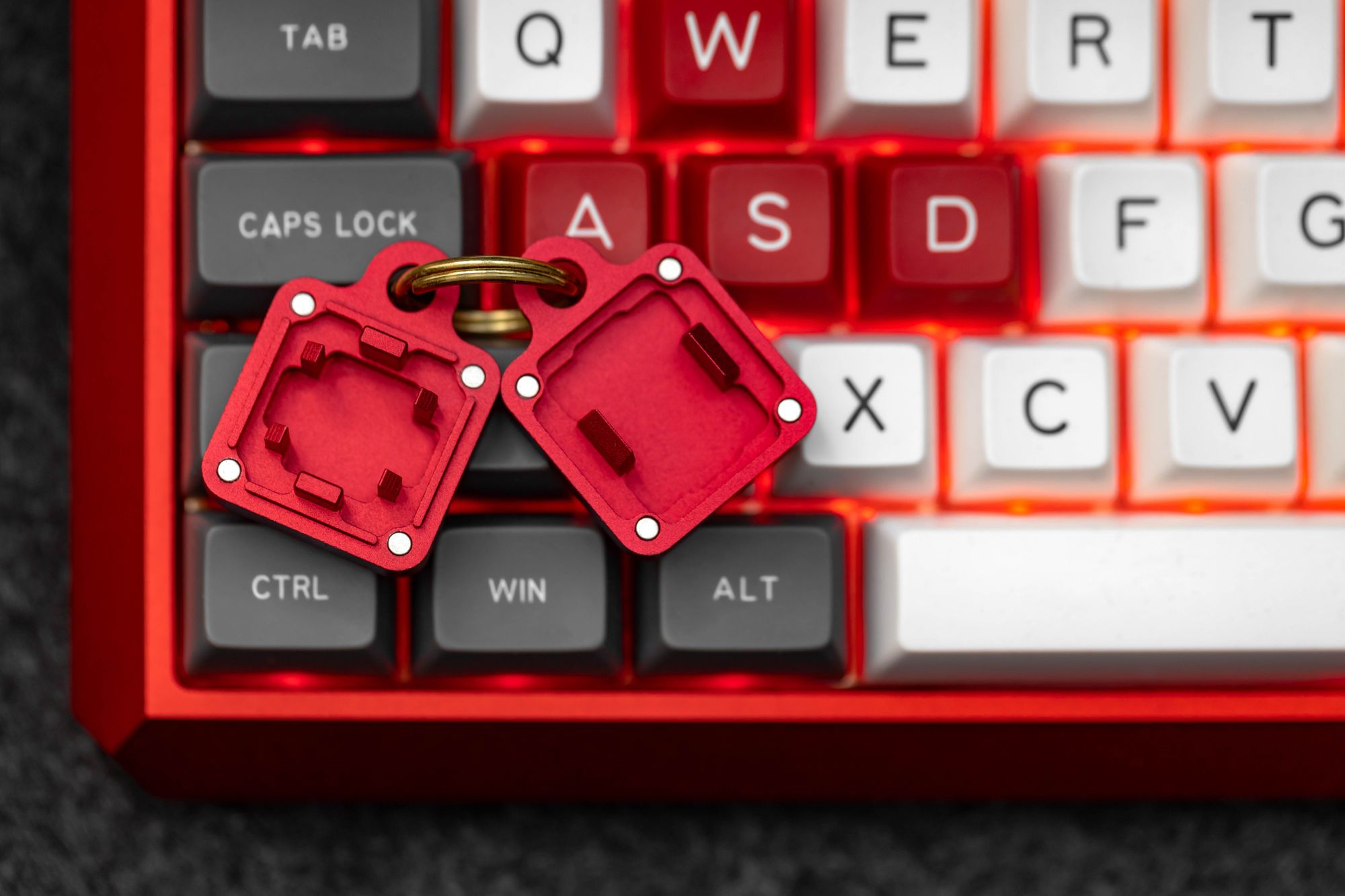
To be continued…
If you made it this far, thank you. I originally planned a build log, but felt it was necessary to document the whole journey. It is a lot of fun and if any of this has made you curious, go for it! The level of customization is endless, and the community is great. I met so many people over these builds and discovered other sides to people I already knew. That said, if you are typing on a Dell 102 key membrane keyboard and you do not find anything wrong with it, that is fine too. This can be an expensive hobby.
Cherry killer is far from the end of my journey, but I am already bordering on novelkeys status. Expect a continuation in the coming weeks. Part 2 is live!
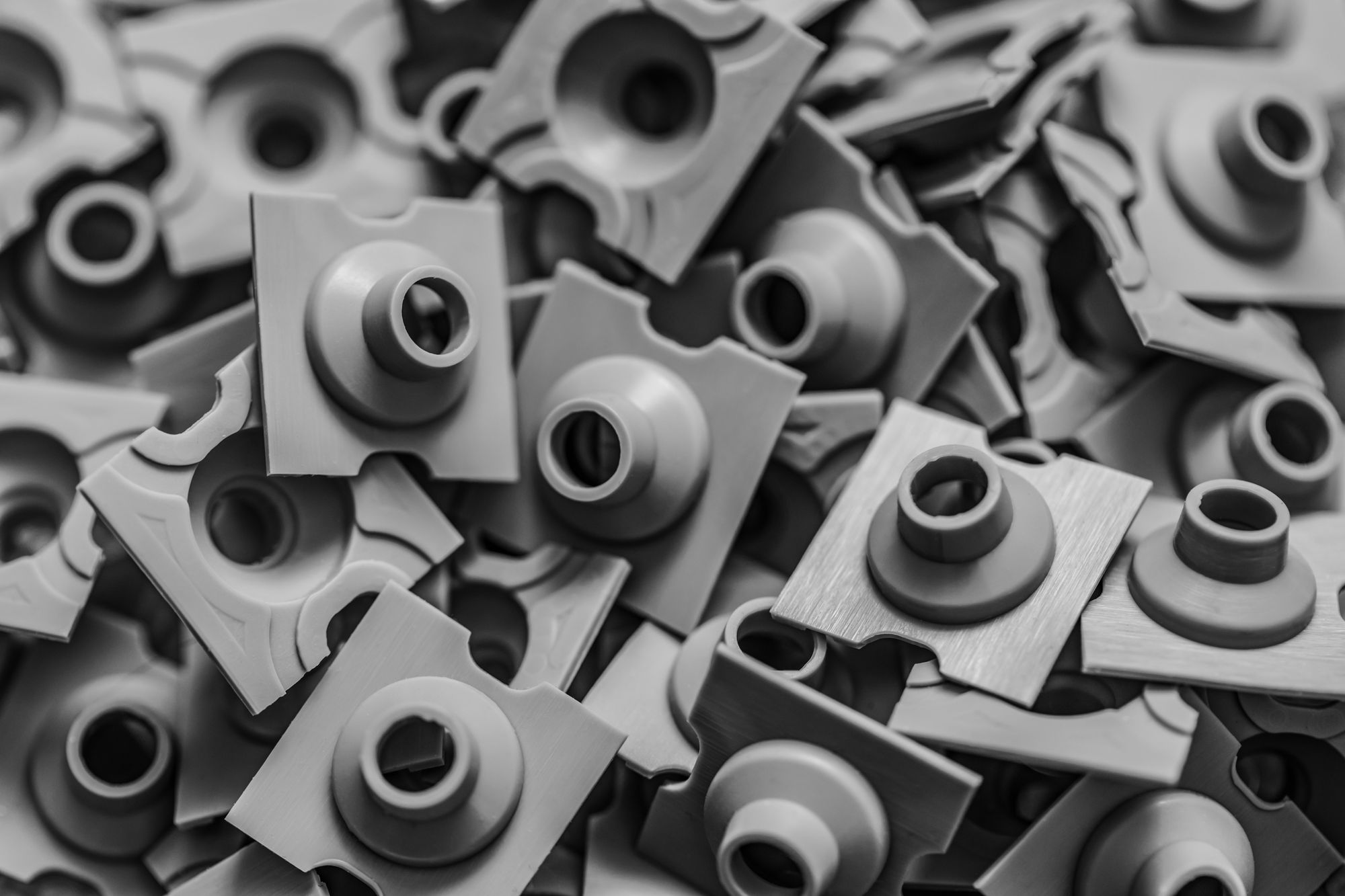
Comments?
Leave us your opinion.
